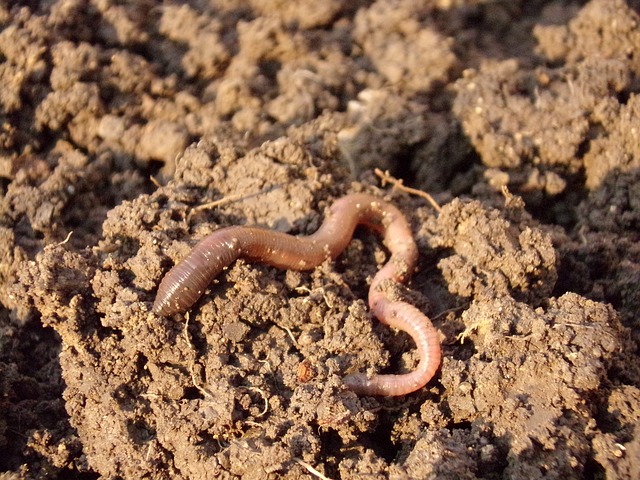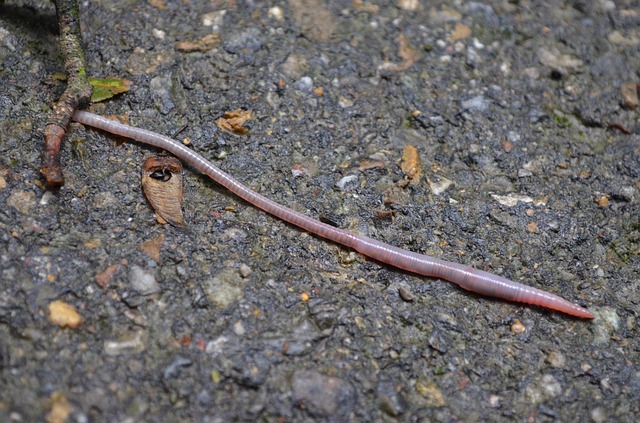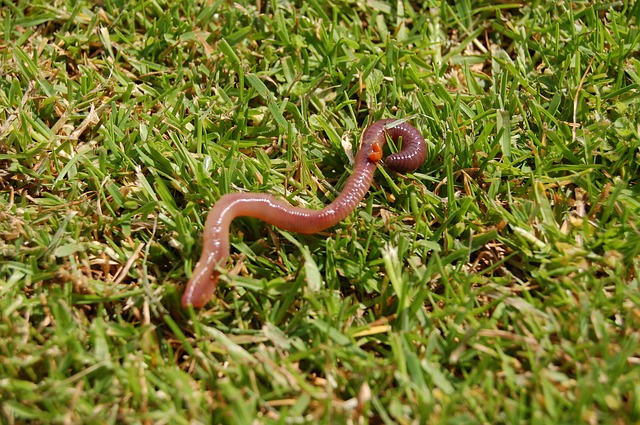How to Increase Earthworms in Soil

Have you ever dug in soil that just crumbled or was super dense? Well, if you live in hot, dry climates like the Arizona desert, this is a pretty common experience. Unless you’ve taken measures to create a healthy soil, I highly doubt any worm life was anywhere to be found. Without worms to create soil life, the soil isn’t going to be conducive for growing.
Why are worms beneficial for soil? Worms feast on organic material and help to break down the soil. As worms penetrate the soil it helps aerate allowing for oxygen to enter the soil which roots need. Worm castings or feces are rich in nutrients for the soil which continues to re-vitalize the soil health. In soil that lacks organic material, there is no food for worms, hence no worm activity. Some benefits include:
- Better Soil Drainage
- Better Soil Structure
- Nutrients are more available for Plants
- Healthier Plants
Steps to Increase Worm Activity

Growing up in the Midwest, it was exciting as kids to go exploring in the woods. As we’d look under logs or leaves we’d find all sorts of things like salamanders, bugs, and of course worms. Forests have all kinds of things that are breaking down and naturally providing organic materials for worms to feast on. In a hot, dry climate, all that organic material decaying on the ground is few and far between. We often don’t have dense foliage or lush trees growing freely.
With that being said, creating a healthy soil doesn’t happen overnight. It’s pretty common to have compacted, clay soil in hot, dry climates. You may find this related post helpful: How to improve soil for fruit trees. There are some steps a beginner gardener can take to start improving worm activity in barren soil types:
- Add Organic Material- Dead Leaves, Mulch, Compost
- Keep it Moist- It’s usually in dry conditions when the soil becomes poor while lacking organics.
- Add Worm Castings or Worms- Once you have things for worms to eat you can add them. Worm castings often have eggs that will produce worms.
- Ensure that Soil isn’t too acidic (PH below 4.5) which generally isn’t a problem in hot, dry climates.
A few things to consider for maintaining worm activity is being careful with fertilizers and keeping your soil healthy. Some fertilizers can be harmful for worms, so it’s best to use organics as much as possible. Fungicides or things like copper sprays can decrease worm populations. It’s also important to maintain healthy soil by keeping it from getting compacted. As long as it’s staying consistently moist, not necessarily wet, it well be good for worms. Last thing to consider is to avoid tilling the soil. When you till the soil it disturbs worm tunnels and can kill many of the worms below the soil surface.
What Types of Worms are Best for Gardens

If you don’t have worm life, how do you add worms? If you build it they will come. As you continue to build a foundation through the steps above you will begin to notice more and more worms when digging around the areas you have been adding organic matter. I’ve never physically added any worms to my soil, but now have an abundance of worm activity throughout my backyard. It’s definitely not going to be beneficial to just toss a handful of worms on top of clay soil and hope for the best. If you want to physically add worms work some of the organic material into the soil and mix the worms into the soil.
Some of the best worm types for gardens are:
- Eisenia Fetida
Most commonly known as Red Wigglers. These are typically used for composting as they tend to be the most rapid feeders. Red wigglers aren’t usually found in soil.
- Eisenia Hortensis
The European night crawler tends to be found more often in Europe throughout garden soils or compost. This worm is mainly used for fishing bait, but has become more prevalent in composting.
- Perionyx Excavatus
This worm is more frequently found in Tropical and Subtropical regions as it likes warmth. This variety tends to produce large amounts of castings.
- Amynthas Gracilis
Another earthworm variety that prefers warm conditions and is well suited for composting in warmer climates.
- Eudrilus Eugeniae
Found in Africa and known as the African night crawler. This is one of the largest earthworms that is used for composting as it can grow to around 10 inches.
- Lumbricus Terrestris
This nightcrawler is one of the most common earthworms in the world.
- Lumbricus Rubellus
A redworm found in fertile soils around the world.
- Allolobophora Caligninosa
This is a more common earthworm that is typically found in top soil.
Getting Started with Worm Composting
Vermicomposting or composting with worms is a great way to recycle those excess vegetable scraps while creating a nutrient rich compost for your gardening needs. It’s also beneficial for the environment by reducing the amount of waste going into our landfills. Compost is some of the best organic fertilizer used for gardening.
One major concern many people have with composting is how it’s going to smell with rotting food? If you set things up correctly, it’s fairly odorless and some worm bins can even be utilized indoors. Here is link for a complete kit to get you started with vermicomposting: Worm Factory 360 Composting Bin.
Once you have your bin and set-up started you’ll need to add worms. Eisenia Fetida or Red Wigglers are going to be what you’ll be looking for to add to your compost bin. If you live near a farm or someone that already specializes in vermicomposting, you can either purchase from them or find them in manure. Keeping the bins at temps around 45-80 degrees is ideal and your worm populations will begin to double in about three months. If you are unable to find Red Wigglers locally, you can order online here: Uncle Jims Worm Farm 2000.
To sum it up, worm activity promotes that natural cycle of creating and maintaining healthy soil for plants to thrive. If your soil is lacking in providing optimal conditions for worms to thrive, then taking proper measures will create a healthy soil over time. As the health of the soil improves, worm life will increase, and you’ll be reaping bountiful harvest from healthy plants.
Please comment below on anything that you’ve enjoyed from this post or how you’ve increased worm activity in your garden.
